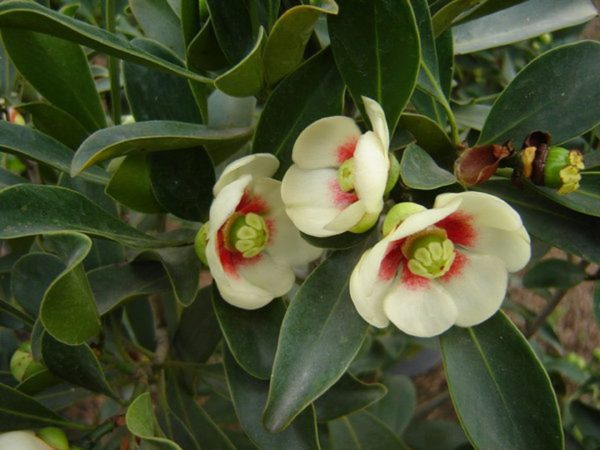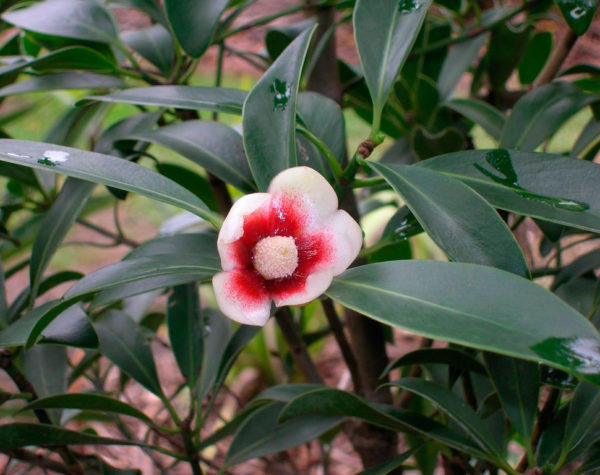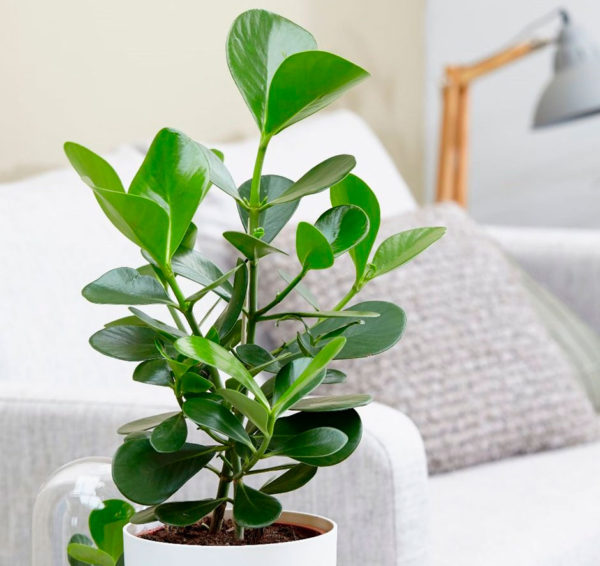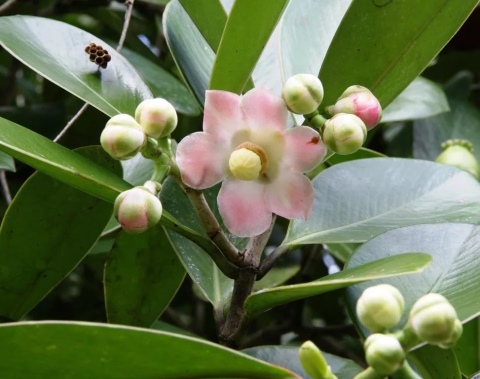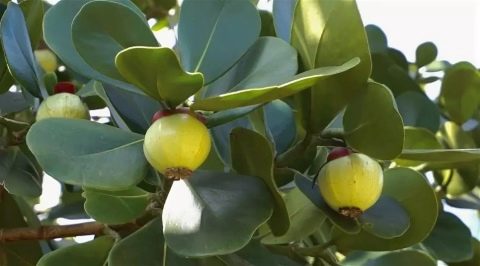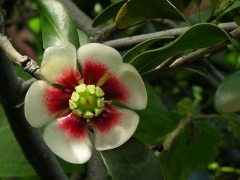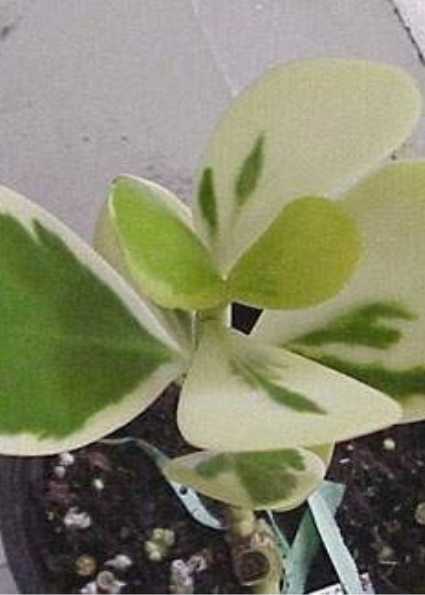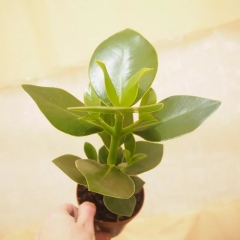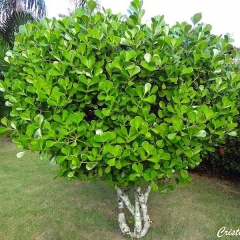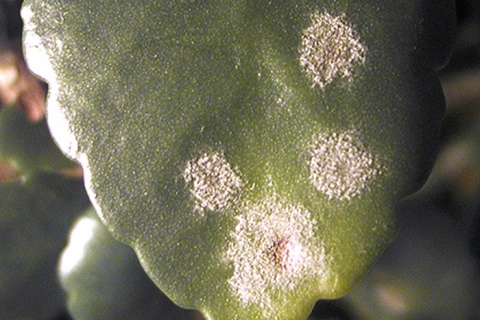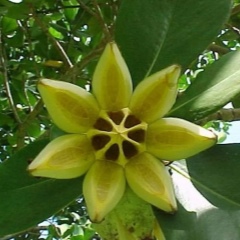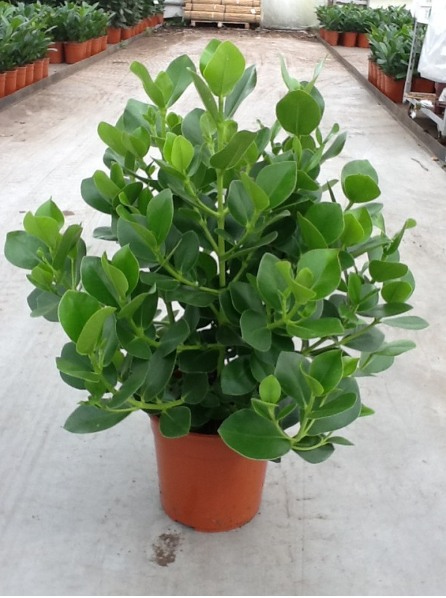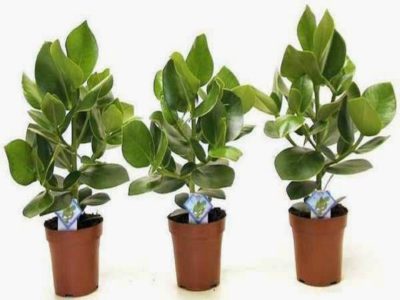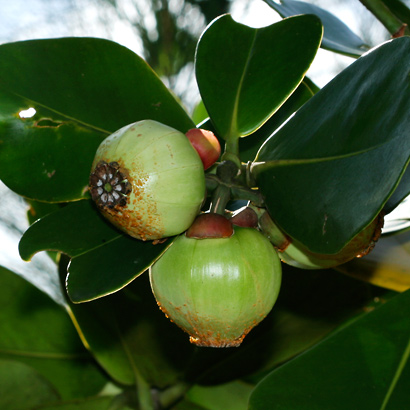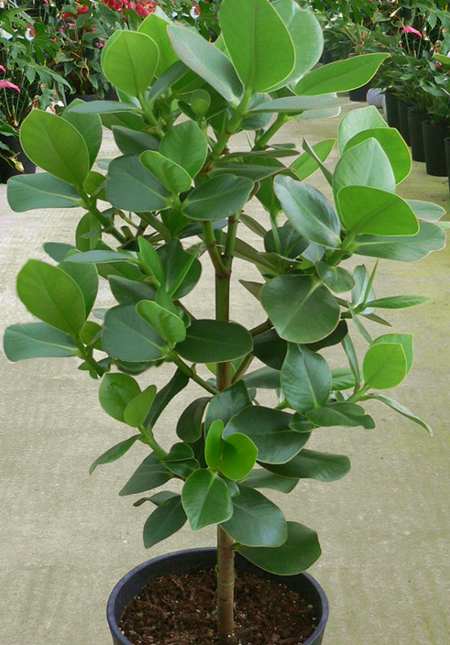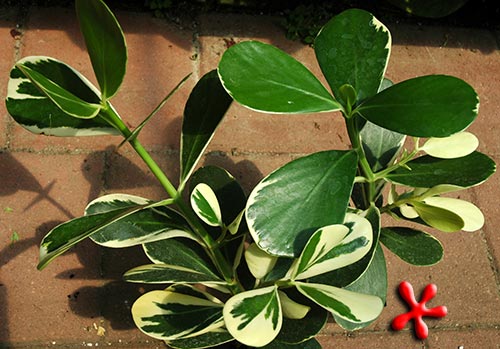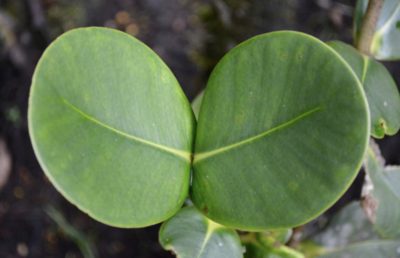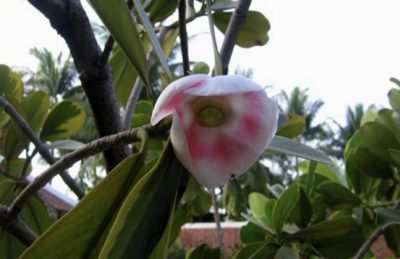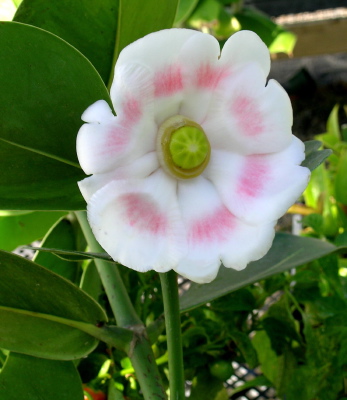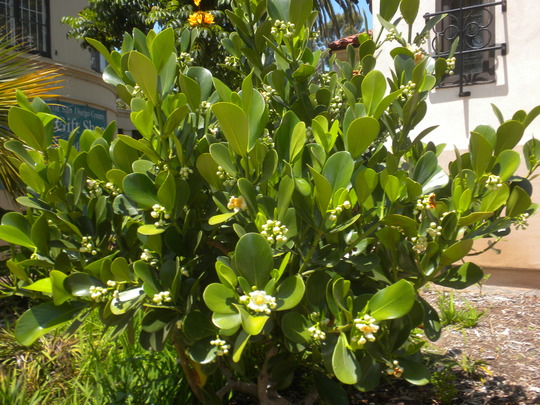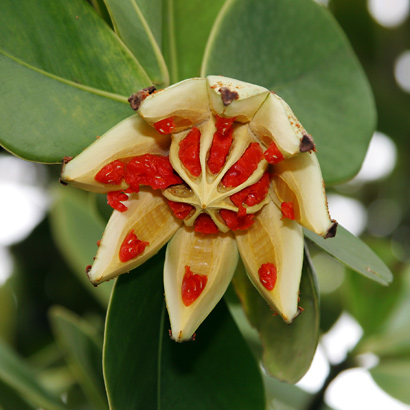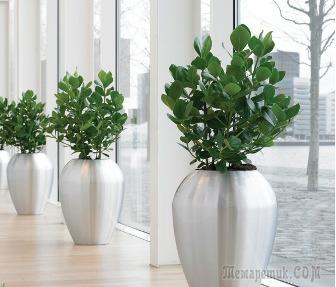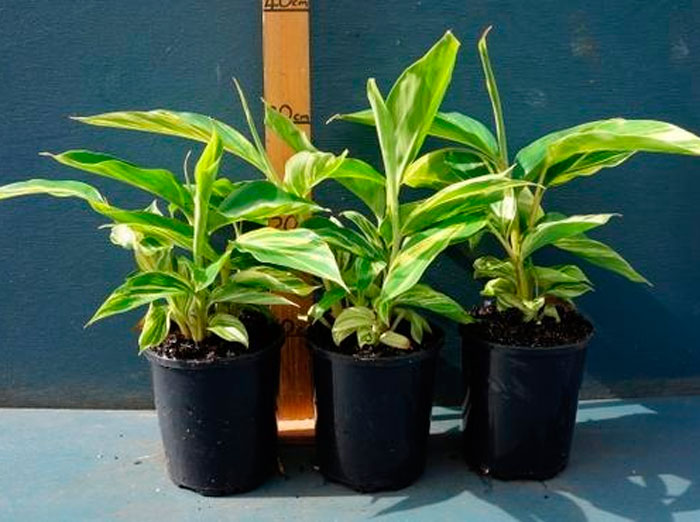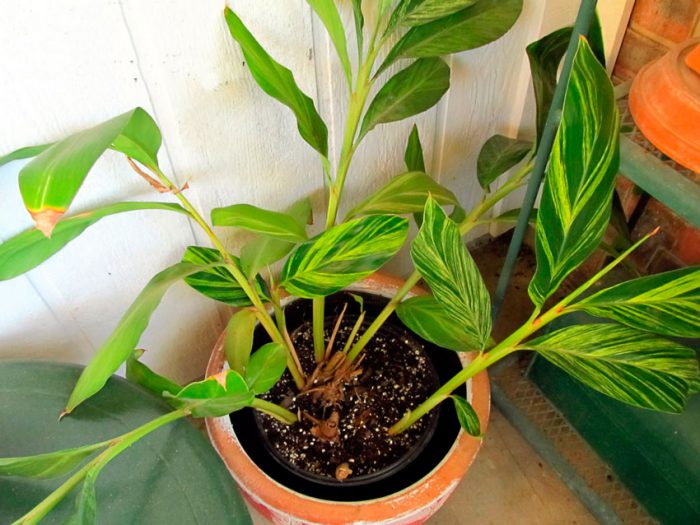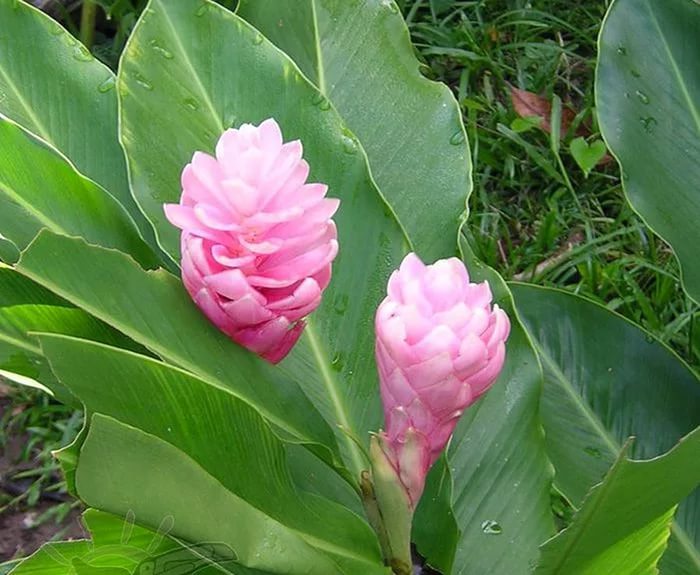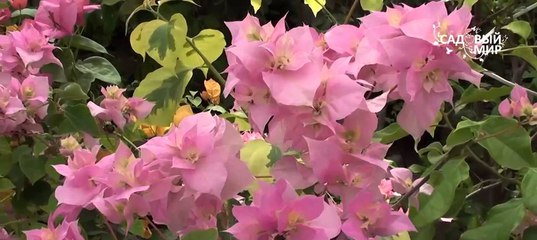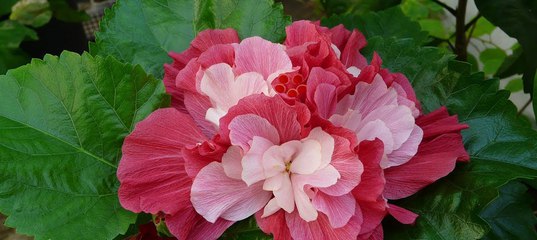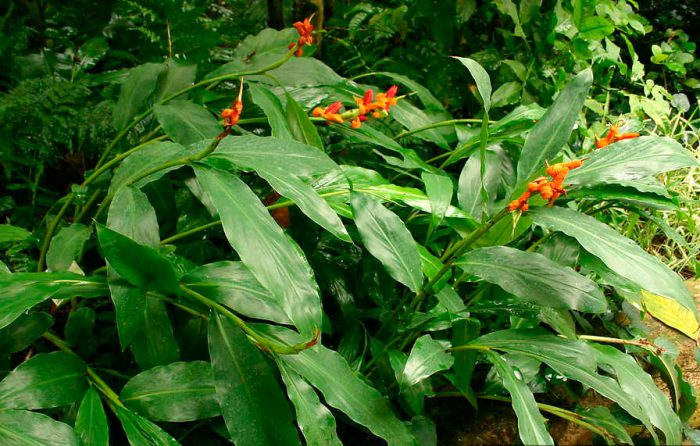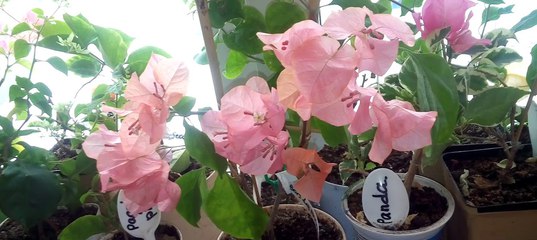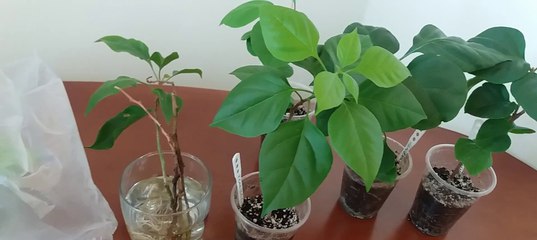Hilocereus species with photos and names
The genus Hilocereus comprises about 25 species. All of them are cultivated indoors. Below, those of the species that are most popular with florists will be described.
Hilocereus Costa Rican

Large flowers are formed in the upper parts of the creeping thickened shoots. The petals are purple with a white border. If the flowers are pollinated, then an egg-shaped fruit will form in their place. The fruit is covered with a purple rind, while the flesh is scarlet. This plant is widespread in Costa Rica, Peru and Nicaragua.
Hilocereus narrow-winged
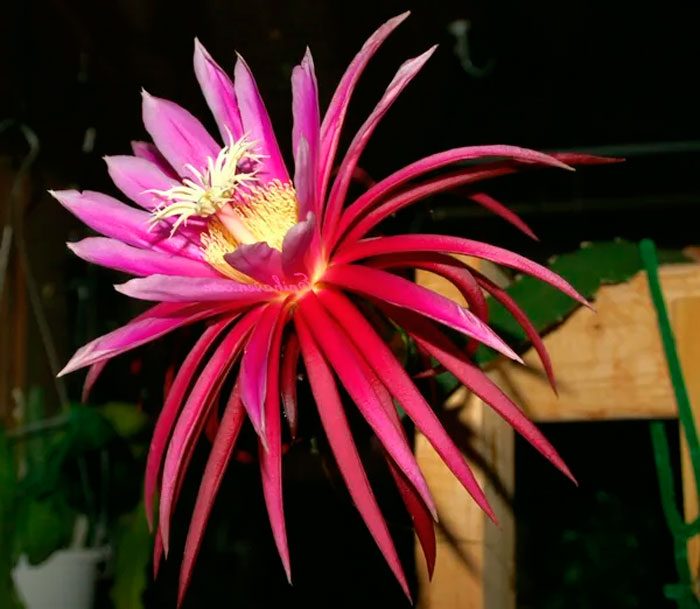
This miniature species has a compact bush: both in height and in diameter it is no more than 15 centimeters. The color of the creeping shoots is chestnut; purple flowers with a short tube are formed on their tops. Rounded fruits reach about 70 mm in diameter. This plant is widespread in Costa Rica.
Hilocereus wavy
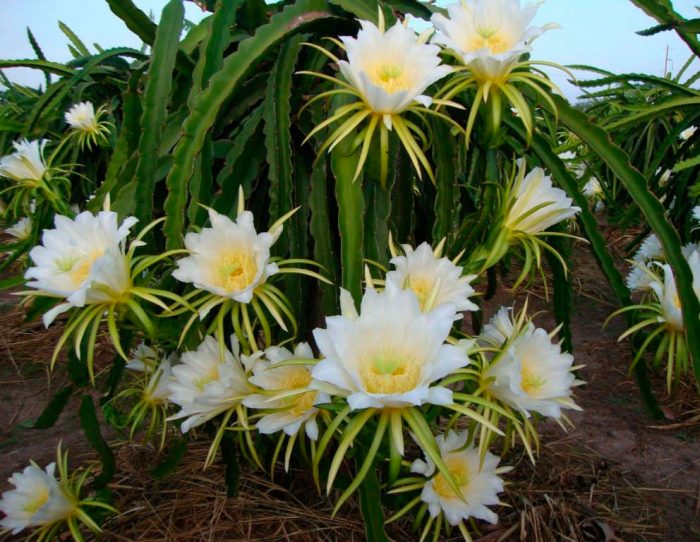
The sinuous shoots of this species are very long, they can reach up to 500 cm. On their lateral edges, short and hard spines grow, which are collected in bunches. The flowers are painted in a snow-white shade, and in diameter they reach about 27 centimeters. A rather large fruit has an oblong shape, it is covered with a red skin. The flesh of the fruit is white and contains black seeds.
Field hilocereus
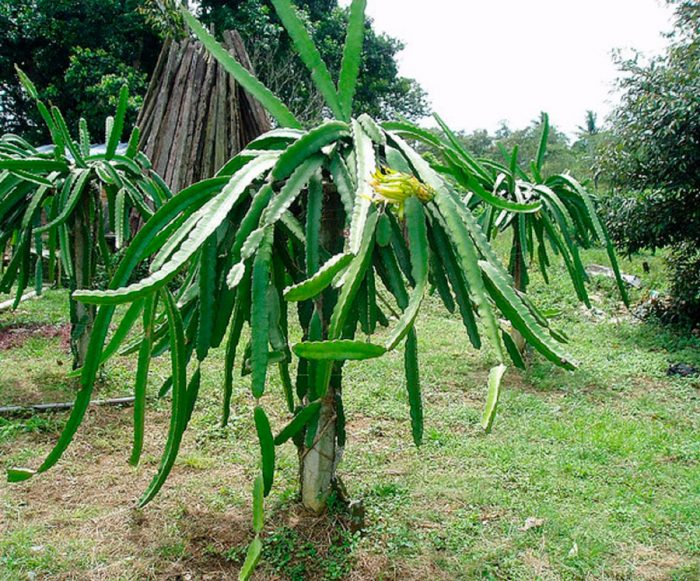
The sinuous shoots of this cactus are painted in a gray tint, and in length they can reach up to 200 cm. On the edges of the stems there are soft yellow thorns collected in bunches. White flowers, reaching about 0.3 m in diameter, are decorated with stripes of light green. The fruits are pink, and their flesh, which has a slight melon scent, can be colored peach or yellow.
Hilocereus trihedral
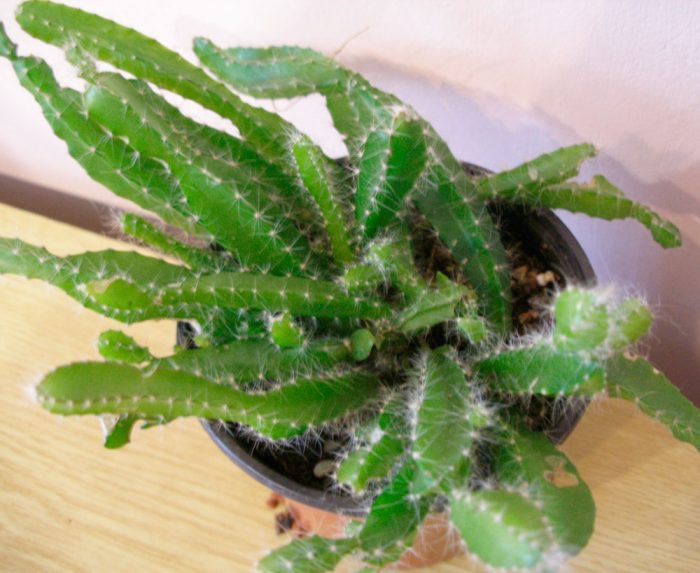
The creeping shoot of this cactus has three pointed edges. The shoots are greenish in color, and on their surface there are many brown or yellow spines, collected in bunches. Large flowers are painted in a snow-white shade.
Hilocereus of Okampa

This vine-like species is widespread in Mexico and Guatemala. Greenish-blue shoots reach about 60 mm in diameter, and their length can be equal to 250-300 cm. On the tops of the stems snow-white flowers are formed, as well as bracts, painted in a purple tint. The pleasant-smelling fruits are colored yellow or pale red.
Hilocereus triangular
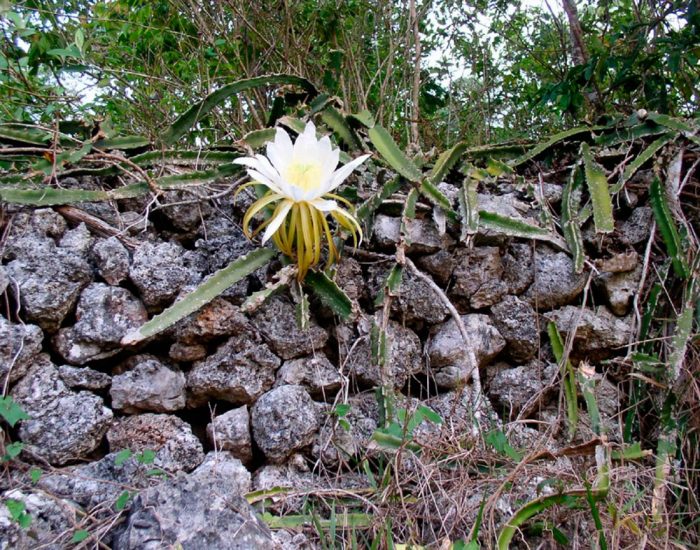
In nature, the species can be found in Cuba, Jamaica and Haiti. Greenish thin shoots have a liana-like shape. Each shoot has 3 pointed edges, on the surface of which there are rare spines. A large number of air roots grow along the entire length of the stem. The tops of the shoots during flowering are decorated with snow-white single flowers, reaching about 20 centimeters in diameter. When pollinated, small red fruits of a round shape are formed, which reach about 50 mm in diameter.
Flower Review | Huge Bud | The Mystery of the Hilocereus Cactus
Frequent problems
The plant sheds leaves - sudden changes in temperature, excessive watering. Leaves fall off en masse after purchase - a natural change of foliage, this is normal for a greenhouse plant.
Needless to say, the clusion requires some attention and certain conditions of care. But an enthusiastic florist, eager to acquire such an unusual plant, is able to tame an amazing "autograph tree". A little love and care - and the beautiful Clusia will live in the house for a long time.
And for the most curious, we suggest that you familiarize yourself with the video about the clusion
Planting cellosis in open ground and how to care for it
When growing cellosis from seeds, do not forget that this plant belongs to the thermophilic and photophilous, which does not tolerate even light frosts.
For planting and caring for the plant, it is important to use nutritious, humus-rich soil and open, sunny areas.


The plant blooms three months after sowing. Seed ripening begins one month after the beginning of flowering. Seeds of medium size, round, black, shiny, viable for 4-5 years.
Before planting celosia in open ground for seedlings, seeds are sown at the end of March. Seedlings appear together two weeks after sowing at an optimum temperature of + 15 ... + 18 ° C. Seedlings tolerate transplantation well, but at first they develop slowly, bloom in 2.5-3 months. Plants are planted in the ground after the frost has passed.
How to care for the plant in order to preserve the decorative effect of the plant as long as possible? Fertilizing with mineral fertilizers is carried out once a month. On hot and dry days, abundant watering is necessary, otherwise the leaves will drop and new peduncles will not form.
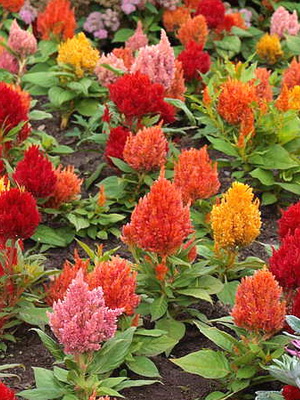
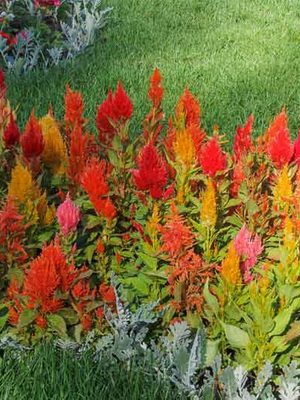
Florists appreciate this plant for the original shapes of brightly colored inflorescences, and in a number of varieties - for decorative leaves. From high varieties, they create spots on the lawn or individual groups in combination with other plants. Low - used for curbs and stains in carpet beds, especially decorative varieties - in a pot culture.
The inflorescences are good for arranging bouquets, both fresh and dried. Leaves are removed from the stems, tied in small bunches and dried with inflorescences down in a cool, dark and ventilated room. Dried inflorescences retain their color and are a good material for winter dry bouquets.
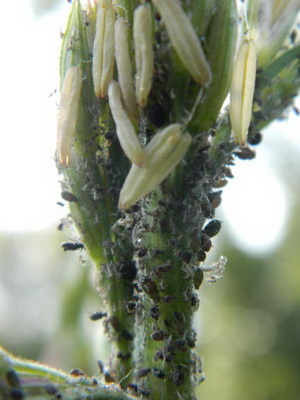
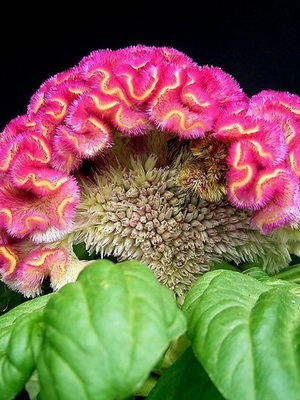
Of the pests, the culture is inhabited by the euonymus aphid. Leaves on a thickened planting are sick with mushroom spot. The lower part of the stem is sometimes attacked by the Rhizoctonia fungus, with a waxy coating appearing. Rhizoctonia is a root parasite and penetrates the plant if it is damaged.
Caring for sour at home
How to care for sour
The indoor flower oxalis has the same requirements for growing conditions as its wild relative. She needs intense, but diffused light with shade from the direct rays of the sun. Domestic oxalis prefers temperature in summer in the range of 20-25 ºC, which, however, is quite natural for this time of year. In winter, it is advisable to lower the temperature a little - to 12-18 ºC, otherwise the plant will not bloom.
Watering in the summer should be abundant, but at the same time, stagnation of water in the roots should not be allowed. With the onset of autumn, watering is reduced, and in winter the moistening of the soil in a pot of acid should be symbolic so that the soil is barely wet. The oxalis houseplant does not need spraying the leaves, although if the house is too hot and stuffy, you can spray the plant with boiled water. In winter, spraying with acid is contraindicated.
Some types of acid plant rest in winter. The rest period lasts a month and a half. If you notice that the plant begins to lose leaves after flowering, reduce watering and transfer the flower to a cool place where it will be at rest. Sometimes the leaves do not fall off the acid, it simply stops growing, as if frozen - this is a sign that it is time to move it to a "winter apartment" to recuperate. At this time, watering should be minimal. But as soon as you find that new shoots have begun to appear in the plant, transplant it into a fresh substrate, return it to its usual place, resume watering and feeding.
Fertilizer acid
Caring for home acidic acid involves the timely feeding of the plant with complex mineral fertilizers.They are introduced during the period of active growth and flowering every 2-3 weeks, and the concentration of the solution should be half that recommended by the manufacturer.
Sour acid transplant
Caring for room acid requires an annual transplant of young plants, adult plants are transplanted once every two to three years. If you don’t know how to transplant acid, start by choosing a pot. The pot for sour cherry needs a wide one so that you can plant several tubers or bulbs in one container - so you get a luxurious flowering bush. A drainage layer is placed at the bottom of the pot so that excess water does not stagnate in the roots of the plant.
Any soil is suitable for acid soil - buy a universal soil in the store or make a soil mixture yourself from leaf, turf, peat soil and sand in equal parts. Please note that if the soil is too nutritious, then the plant will have a lot of leaves and few flowers.
Planting acid in a new pot is carried out with great care, along with an earthen clod, if you have no intention of breeding it this time
Pests and diseases of acid
Oxidis is resistant to insect and disease, but if not properly cared for, it can be invaded by spider mites, aphids, or scale insects. The spider mite is eliminated by treating the plant with actellik, the aphids are destroyed by spraying the acid with a solution of two teaspoons of liquid soap in two glasses of water, and the scabbard must first be removed mechanically - all parasites must be collected from the plant, and only then the acid must be treated with the acid.
If it is not possible to destroy the pests from one time, after a week the treatment of the plant with medicinal preparations must be repeated. Do not forget that all manipulations are carried out in clean air, and the surface of the soil must be reliably protected from the ingress of drugs on it. The soap solution, a few hours after application to the ground part of the plant, must be washed off with water, covering the soil from soap in the same way.
If you are too zealous with watering and do not bother to place a layer of drainage under the soil, the plant can be affected by gray rot or fusarium. Both diseases in the initial stage are successfully treated with foundation.
Home care
Clusia, it is better to purchase in the spring. After the purchase, it is desirable to provide certain conditions for the clusion, where it will grow and develop.
Illumination
Clusies, like most home flowers, light is vital.
An important condition is that the light must be diffused. It is recommended to place the plant on windowsills, east or west side
In winter, it is advisable to provide illumination with a phytolamp for a flower.
Temperature and humidity
In the warm season, the favorable temperature is +25, in winter +20 is permissible. Eliminate drafts, but try to periodically ventilate the room.
Requires high humidity. Periodically, you need to spray the plant with water at room temperature and wipe the leaves with a damp cloth.
Watering
Water for irrigation must be warm. Watering should be done once a week, or as the top layer of the earth dries out.
It is important not to allow excessive moisture, which can lead to the death of the plant.
Top dressing
Top dressing is used in warm weather (April - October) 2 times a month, in winter - 1 time per month. These are complex fertilizers, from which they take half of the portion of the recommended dose.
Pruning has a beneficial effect on the plant and helps it stimulate the branching of the stems.
Transfer
Painful procedure for this plant. It should be carried out when absolutely necessary and subject to certain rules.
It is better to replant in the spring using the transshipment method. The pot should be a couple of centimeters larger than the root system. Lay out a drainage of 4 cm at the bottom, and without shaking off the soil from the roots, transplant the plant. Spray with warm water for several days.
Priming
The soil should have good moisture and air permeability, with an acidity content. You can get an ideal soil by mixing coniferous and leafy soil, vermiculite, peat and sand.
Reproduction
There are 3 breeding methods:
Apical cuttings are harvested in spring. The cuttings are pretreated with growth stimulants. Then they are placed in a warm place where the soil and temperature are 25 degrees. A mini greenhouse is suitable for this, covering the cuttings with film or glass. Rooting occurs at 3-4 weeks.
Adult plants have aerial roots that grow over time and form shoots. These branches can be grown as an individual plant.
Seed propagation is more difficult than the previous two. The fact is that the seeds quickly lose their germination.
The seeds are soaked in a special growth solution on a flat surface. Then the pot is filled with a mixture of sand and peat, moistened and the seeds are lowered halfway. Cover with foil or glass, place in a warm place with soft light.
Diseases and pests
Proper care of the clusion guarantees a minimum risk of disease and infection. It is necessary to monitor the temperature in the room with a flower and do not abuse watering. The most dangerous pests are mealybugs and spider mites.
Description
Named after the Dutch scientist Karlus Kluzius, the clusia is separated into a separate Kluziev family. Among the numerous varieties, there are clusia growing in the soil and epiphytic forms. The root system has a ramified character, the main roots gradually grow stiff and occupy a large area underground. New plants can form from sprawling roots.
The stems are strongly branched from the base and along the entire length. The plant has greenish young growth, which is gradually covered with light brown bark. Clusian milky juice has long been used for a variety of purposes. It served to fasten parts in shipbuilding, and also helped to get rid of corns and other ailments.
Dense leathery leaves have a short petiole and are arranged alternately on the stems. The surface of the leaf plate is smooth, bright green. The leaves are oval or lanceolate with a solid edge and a pointed end. The length of each leaf can be from 8 to 20 cm, and the width is 5-8 cm. There are varieties with small foliage.
An interesting clusia flower, its petals are slightly thickened and as if covered with a wax coating. In its natural environment, flowering continues throughout the year. The buds open at night and curl up in the morning. Each bud consists of 4-9 rounded petals, colored white with pink or yellow streaks. The diameter of each flower is 4-5 cm.
After pollination, the fruit ripens in the place of the bud. When closed, it resembles a rounded poppy box covered with a light green skin. The diameter of the fruit is 5-8 cm. As it ripens, the skin turns dark brown and the fruit opens in the shape of a star. Inside, red flesh and many seeds are found. The fruit of the clusion is inedible, the juice can cause irritation on contact with the skin.
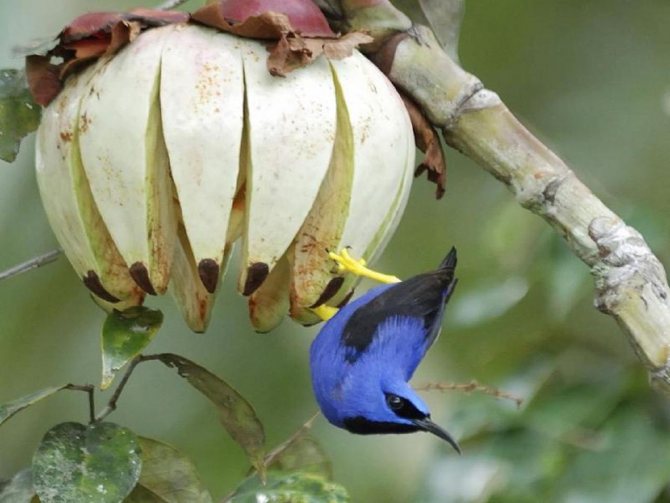
How to care for a clusion
Light and location
The flower loves light. Requires diffused bright lighting. If it is not enough, then it begins to change its shape, stretch and look less attractive. It is advisable to increase the duration of daylight hours to 12 hours in autumn and winter.
Clusia, the care of which also consists in maintaining the temperature regime. The optimum temperature is 25 degrees. In winter, it is lowered to 20.
The flower loves air, but does not like drafts.
In addition to temperature, it is important to control the humidity in the air. The plant must be sprayed regularly
It is advisable to use settled water.
Clusia, the photo of which is posted below, is very sensitive to excess water. Therefore, be sure to stick to moderate watering. The primer must dry between treatments.You need to water the plant with soft water slightly warmer than room temperature.
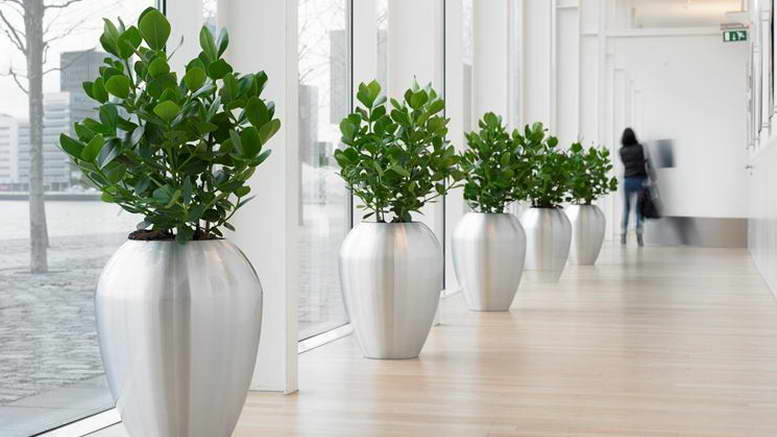
Choose a light and loose soil. It is desirable to include vermiculite, sand, coniferous soil in the composition.
Fertilization is carried out every 15 days, but only in summer and spring. Use universal complex drugs. The dosage should be set at half that indicated in the instructions. During the rest period, no additional food is required.
The procedure is performed only by transshipment in the warm season. The capacity is selected according to the size of the roots.
Reproduction
You can use seeds. They are planted immediately after collection, as they quickly lose their germination rates.
Reproduction by clusia cherni is the best option. It takes a long time to take root. Babies take root for about 4 weeks
For their growth, it is important to create greenhouse conditions, but do not forget about ventilation.
Diseases and pests
With proper care, health problems do not arise. Pests are also rare. There is a risk of a red tick. In this case, insecticide treatment will help.
Ampel plant transplant
It is carried out only in the spring, when active growth begins. Young dyschidia need transplanting, the roots of which grow voluminously in pots. A thickened drainage layer is laid out on the bottom.
Breeding features
To propagate dyschidia, use the vegetative and seed method. A faster option is growing from cuttings, which are cut from the tops of young stems. The plant has many air roots, the material takes root quickly.
How to carry out correctly:
- The cut is made obliquely, sprinkled on top with charcoal powder;
- The standard length of cuttings is 8-10 cm;
- Immersed in water for 2-3 days, which is replaced daily;
- Placed in the substrate at an angle;
- Cover with a cap;
- Keep warm at a temperature of 20-22 degrees;
- Ventilate.
For planting cuttings, a sand-peat mixture is selected.
Inside the sacs, you can almost always find daughter shoots with roots, ready for separation. The leaves are carefully cut, new vines are detached and transplanted into a container.
For seeds, use the same moist substrate, light with impurities of peat. The seeds are slightly deepened by 0.5-1 cm, sprinkled on top with a thin layer and tamped. The containers are kept under film or glass, as in a greenhouse, until shoots appear. Maintain temperature 20-25 degrees, humidity 50-60%.
Now read:
- How Chinese cabbage is grown outdoors
- Outdoor hydrogel use for plants
- A persistent, large harvest of cucumbers after planting them for seedlings
- The use of perlite in the garden and for indoor plants
Share the news on social networks
About the author: Vladimir Petrovich Efremov
Chief agronomist of the Limited Liability Company "Association of Peasant (Farming) Farms" Kuznetsovskaya "", Ilovlinsky District, Volgograd Region.
Beautiful and unique clusion
Clusia
(Clusia) is often compared to a similar ficus. Botanists identify at least 150 species of evergreen clusia - epiphytes growing on huge trees.
Belonging to the family Kluziev
, and according to some sources - St. John's wort, this plant is a native of the tropics and subtropics of America.
Clusia
Is a tree or shrub with green leathery leaves. Interestingly, thanks to the thin green peel on the surface of the leaves, the clusia has earned the fame of the "autograph tree". The inscriptions scratched on the leaves remain in the form of scars for a long time.
Clusion roots
They are characterized by creep and grow horizontally, which in nature allows it to be fixed on the bark. Also, the plant acquires a vertical root system, which feeds it with useful substances from the soil. Over time, the clusion growing in the forest destroys the trunk of the tree on which it is attached, and begins an independent life.
Long ago resinous milky
Clusia juice was used in the construction of ships and in medicine for the treatment of corns and other ailments. Designers actively use clusion in flower arrangements to decorate the interior. It creates an interesting contrast with plants of a different foliage texture or with flowering apartment dwellers.
Often
in indoor floriculture there is a species called Clusia rosea. In culture, the plant is capable of reaching 2 meters in height, and in nature - 25 meters. Its leaves are large, glossy and juicy. There are variegated variations.
Wax
white-pink flowers of a pink clusion differ in size up to 5 cm and a wonderful aroma. The plant grows rather slowly, and flowering is not so frequent. As a result, a fruit is formed in the form of a box up to 8 cm in size. After ripening, it bursts and becomes like a star, decorated with red pulp. It is not edible and can cause skin irritation when touched.
Care
Priming
A suitable soil should be lightweight, permeable to liquid and oxygen, and have a high acidity level (pH 4.5-5.5). The store sells a universal soil for decorative deciduous plants - it will do. You can improve it by adding a handful of coarse sand.
If you want to prepare a soil mixture with your own hands, mix the following components: 2 parts each of leaf and peat soil, the same number of matted coniferous needles, 1 part each of coarse sand, perlite or vermiculite. Be sure to treat the soil before planting: pour it with a weak solution of potassium permanganate, steam in a water can, heat it in the oven or freeze it in the freezer.
Lighting and location
Clusia needs light - but not direct, but diffused light, and at least 10 hours a day. Lack of lighting leads to a deterioration in the appearance of the plant: it will look untidy and even painful. When choosing a place, stop at the western or eastern windowsill. You can also choose the southern one, but the pot should not be placed on the windowsill, but a little further away, and it is imperative to shade the window so that the sun does not burn the delicate greenery. In autumn and winter, artificial lighting must be turned on.
With the onset of summer, take the clusion to the balcony, but just make sure that the flower does not suffer from drafts and precipitation.
Temperature regime

The temperature suitable for the clusion should be kept within + 20-25 degrees. But in winter, with the onset of a dormant period, relaxation is allowed: + 15-18 degrees. If you are going to ventilate the room, take the clusion to another room (especially if the temperature difference outside and in the room is large) and do not allow sudden temperature fluctuations.
Watering and humidity
Watering the plant should not be too abundant and not often: the slightest stagnation of liquid in a pot or pan will cause root rot. Therefore, remember: the earth must dry at least a third or better - half the depth.
A slight drought of the clusion is not terrible, but the plant has certain requirements for air humidity. The higher it is, the better. Therefore, water and spray your pet 2 times a day: on both sides of the leaves, without affecting the buds and flowers. You can also use a household humidifier. But putting the pot next to the heating devices is definitely not worth it, otherwise there will be no use from the humidifier!
Irrigation water - only purified and soft, room temperature. You can buy distilled water at the store, you can pass tap water through a regular home filter, but collecting rain or melted water is not recommended. Too much harmful substances accumulate in such water, and the tender clusion will quickly die.
Top dressing

You can feed the clusion during the entire growing season: from March to November. The rest of the time she rests, and you should not disturb the plant with unnecessary manipulations. From fertilizers, buy mineral and organic fertilizers for cacti, and alternate one or the other every two weeks.In extreme cases, you can pour in liquid fertilizer for indoor plants (Forte, Etisso, "Clean sheet", "Fasco")
One caveat: if you use supplementary lighting in winter, top dressing should be carried out as before, but reducing the dose. Start from the instructions: divide the recommended portion by two.
Transfer
We recommend replanting a young plant every spring, an adult every two years, but only if it has "outgrown" the pot and stopped developing. But do it very carefully: the clusion reacts painfully to the change of the pot and can become rundown.
Choose a new pot a couple of centimeters wider than the previous one, lay a drainage layer by 1/4 (expanded clay, pebbles, broken brick) and transplant the clusion by the transshipment method, without shaking off the earthen clod. Thoroughly fill all the voids with soil mixture, water the bush and put in a shaded place for a week. The first feeding is allowed after 6-8 weeks.
Clause care
Clusia home care does not take much effort. This flower will delight you with its flowering, especially in the evening, and will bring tropical notes to the interior of the room.
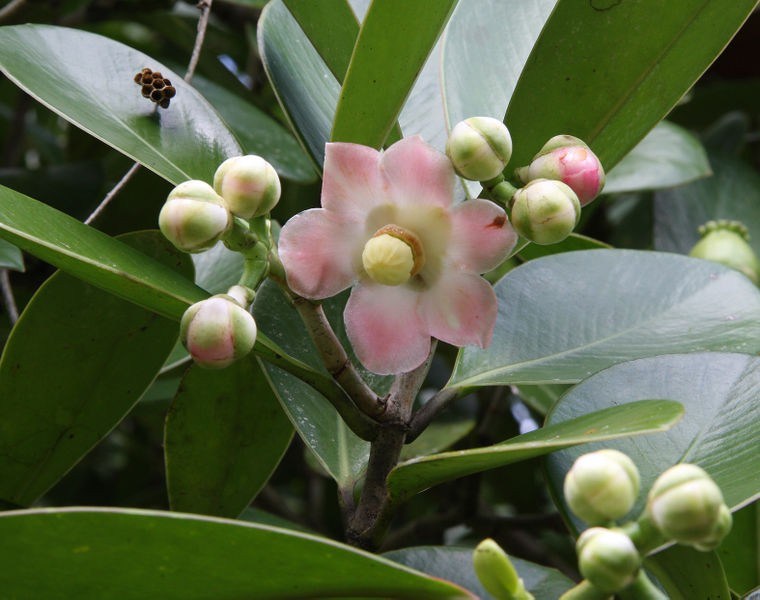
Clusia with pale pink color
Watering mode
The culture does not tolerate waterlogging very well. Since its homeland is the tropics, the flower's resistance to heat is high. This is due to the well-developed root system, as well as the fleshy structure of the leaves, in which water accumulates.
The plant is watered as the soil dries up. Check this on the top layer of the earth, it must be completely dry. There are also special measuring devices for this.
Important! Do not overfill the Rosea clusion of princesses - this will lead to rot in the roots and death
Top dressing
The process of fertilizing a clusia plant has several features. This should be taken into account when leaving:
- fed every two weeks in summer and once a month in winter;
- use for this mineral complexes for flowering crops;
- liquid solutions of chicken manure or mullein in a 5% concentration are also suitable;
- watering is combined with feeding, so the flower will quickly absorb nutrients.
Fertilize the plant in order to improve flowering, strengthen immunity, and protect against the attack of harmful insects and infections.
During flowering
During flowering, the plant needs to create optimal growing conditions. A few simple rules are followed:
-
Clusia is a light-loving plant. Therefore, they place the pot in a well-lit place, but protected from direct sunlight. In winter, it is recommended to light up the flower up to 12 hours a day.
- In indoor conditions, the plant feels good. The optimum temperature is 25 ° C.
- It is advisable to regularly ventilate the room, but not place the pot in a draft.
- Clusia loves high air humidity, therefore it is periodically recommended to spray the foliage with settled water from a spray bottle.
During the rest period
The dormant period for the plant begins from late autumn to the end of winter. This usually takes about 3-4 months. Then the plant begins to give flowers again and delight flower growers. During rest, watering is limited or completely stopped. Move the pot to a shaded area. It is also not recommended to feed the indoor flower clusia. Usually a small amount of fertilizer is applied once a month.
Important! At rest, the plant can be left in the same place, but covered from the sun with a sheet of paper.
Preparing for winter
The plant must be prepared for winter. The dormant period is indicated by the last ripe fruit on the branch: it opens, then falls off. Clusia is prepared as follows:
- all old, yellow and damaged leaves and shoots are removed;
- remove dry fruits from the branches;
- water the flower before wintering;
- apply fertilizers once;
- transferred to a more shaded place;
- the room temperature is maintained at about 20 ° C.
Clusia pink is popular with gardeners who prefer tropical plants.Rosea will decorate any home with its lovely pink and white flowers. The culture is unpretentious in care, does not require increased attention, is heat-resistant, therefore does not require constant watering.
In its natural environment, the flower is shaped like a small tree or bush. And at home they learned to maintain a clusion and get full bloom. It is a pleasure to look after her.
Clusia Features

First, weightless roots are created in the epiphyte, with the help of which it is attached to the bark of the host culture. Further, a phased growth of the roots occurs, subsequently reaching the soil surface with them, they begin to start up the roots in it.
Gradually, when Clusia spreads, it begins to squeeze the host culture with its own roots, and it dies.
Leaf blades leathery to the touch, bare and even, intense greenish in color, they are considered short-petiolate and opposite. The configuration of the entire leaflets can be round or lanceolate, their apex is angular, their length can vary from 8 to 20 cm, and the width - from 5 to 8 cm.There are 4-9 pieces, they have a white-emerald color with yellowish spots or red tone.
The flowers reach about 50 millimeters in diameter and have a very attractive, but subtle scent. The opening of the flowers takes place in the evening, and by the morning they cover themselves. The fruit is a rounded capsule, reaching 50–80 millimeters in diameter; its plane is covered with a green peel.
The cover of the fetus at the time of its own formation becomes the darkest, and then - brown. It unfolds in a star-like manner, and in its middle in the scarlet pulp it is possible to reveal a huge amount of grains. It is forbidden to eat fruits, and if nectar is on the skin, irritation may form on it.


